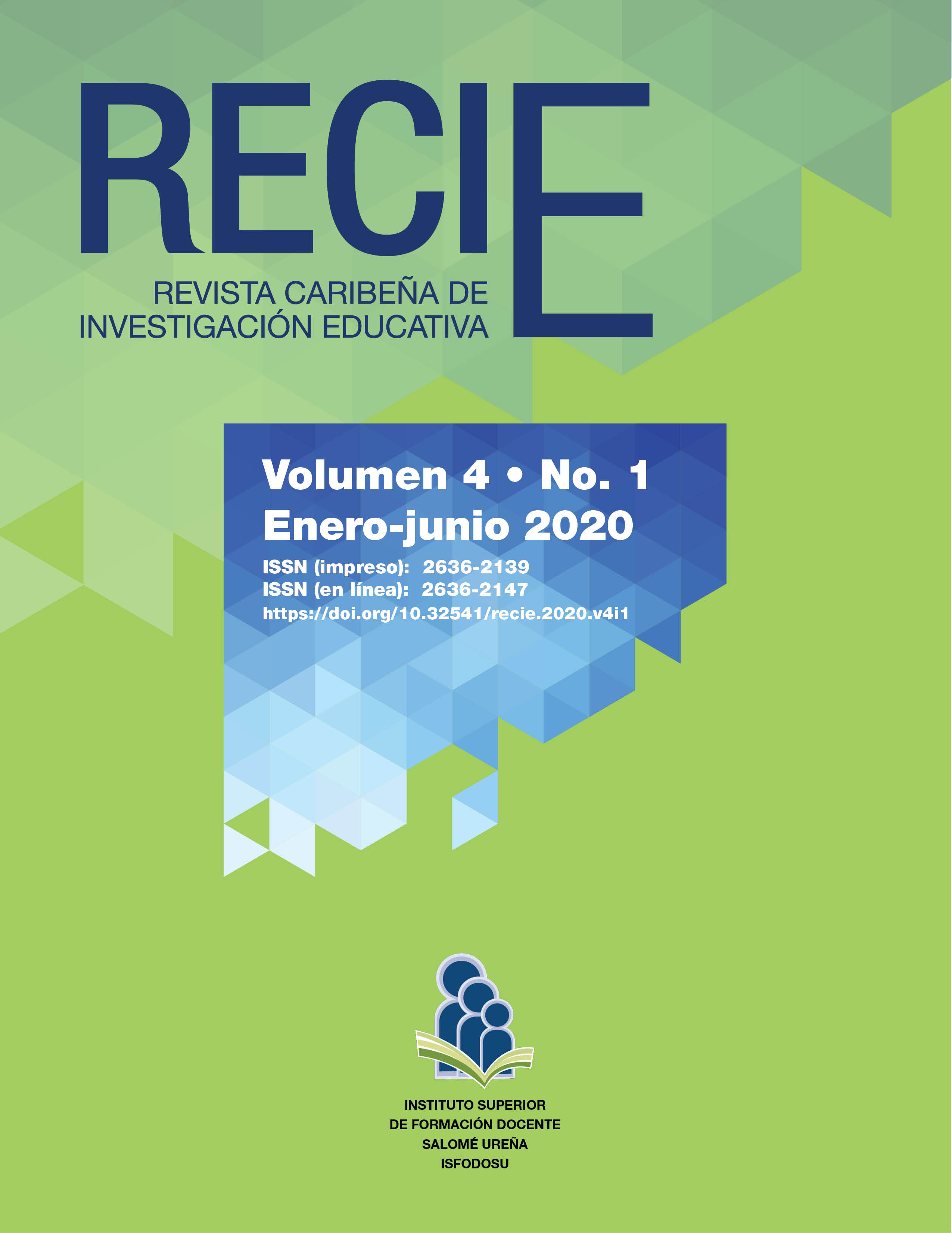Introduction of GeoGebra in the teaching–learning process of Geometry to teachers in training
Authors
Rogel Rafael Rojas-Bello
Instituto Superior de Formación Docente Salomé Ureña, República Dominicana
[email protected] https://orcid.org/0000-0002-9183-7572Detalles
Published
Abstract
This paper presents a didactic experience of the mediation of the GeoGebra software in the teaching–learning process of the Geometry III course in students of the bachelors degree in Mathematics Oriented towards Secondary Education at ISFODOSU. The methodology consists of cooperative classes between teachers and students, and they are supported in a variety of problematic situations by GeoGebra software which has a compendium of elements that allow different teaching-learning experiences, is easy to use and has robust graphic representations. Several experiences that were carried out in the classroom are described, proved a good participation and motivation of the students in the work of individual and collaborative classroom, in addition to the appropriation by the students of geometric knowledge in two- and three-dimensional Cartesian coordinates, as in polar coordinates.
Keywords
How to Cite
Downloads
Metrics
References
Calvo, M. (2008). Enseñanza Eficaz de la Resolución de Problemas en Matemáticas. Revista Educación, 32(1), 123-138. https://bit.ly/2TDsjHY
Corella, F. (2012, 20 de noviembre). Secciones Cónicas - FIT [video]. YouTube. https://bit.ly/2sJkJRc Cotic, N. (2014). GeoGebra como puente para aprender Matemática. Congreso Iberoamericano de Ciencia, Tecnología, innovación y educación, 1(2), 124-130. https://bit.ly/2NFNs0i
GeoGebra (2019). Una introducción al desarrollo de GeoGebra. Consultado el 13 de enero de 2019. http://dev.geogebra.org
González, C. (2010). El aprendizaje y el conocimiento académico sobre la enseñanza como claves para mejorar la docencia universitaria. Calidad en la Educación, (33), 123-146. https://doi.org/10.31619/caledu.n33.141
Jiménez, J., & Jiménez, S. (2017). GeoGebra, una propuesta para innovar el proceso enseñanza-aprendizaje. Revista Electrónica sobre Tecnología, Educación y Sociedad, 4(7), 1-17. https://bit.ly/2G6o4wG
Luna, L. (2012, 9 de mayo). Aplicaciones de las cónicas en la física [video]. YouTube. https://bit.ly/2v6kBMn
Morales-López, Y. (2019). Conocimientos que evidencian los futuros profesores cuando realizan una tarea que involucra geometría, enseñanza y uso de tecnologías. Acta Scientiae, 21(2), 75-92. https://doi.org/10.17648/acta.scientiae.v21iss2id5081
Muñoz, J., Federman, J., & Munévar, R. (2002). Experiencias en investigación-acción-reflexión con educadores en proceso de formación en Colombia. Revista Electrónica de Investigación Educativa, 4(1), 1-15. https://bit.ly/3apzv0d
Organización de Estados Iberoamericanos (2010). Metas Educativas 2021. La Educación que queremos para la generación de los Bicentenarios. https://bit.ly/365UmlX
Ramírez, C. (2015). Diseño de herramientas que fomentan el aprendizaje de matemáticas con ayuda de Mathematica 10. Elementos, 5(5), 65-78. https://doi.org/10.15765/e.v5i5.613
Silva-Peña, I. (2012). Investigación-Acción Realizada por Docentes Chilenos como una vía para su Desarrollo Profesional: Caracterización de dos experiencias. Paradigma, 33(1), 27-44. https://bit.ly/3675xek
Socas, M. (2011). La enseñanza del Álgebra en la Educación Obligatoria. Aportaciones de la investigación. Números, Revista de Didáctica de las Matemáticas, 77, 5-34. https://bit.ly/2NJxXod
Universidad Central de Chile (2017). Manual de Apoyo Docente. Evaluación para el aprendizaje. https://bit.ly/2NEfedx
Section
License
Copyright (c) 2020 Caribbean Educational Research Journal (RECIE)

This work is licensed under a Creative Commons Attribution-NonCommercial-NoDerivatives 4.0 International License.
